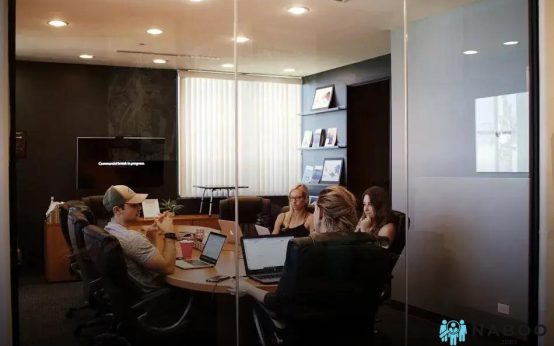Managing work-life balance in a hybrid role requires strategic planning and effective time management. In today’s dynamic work environments, understanding how to blend professional and personal responsibilities is crucial for achieving harmony. This blog will explore practical strategies, tools, and tips to help you thrive in both your career and personal life. Dive into ways to integrate work and life seamlessly while maintaining productivity and mental well-being.
Understanding the Hybrid Work Environment
The hybrid work environment brings unique challenges and opportunities. It combines remote and in-office work, providing flexibility to enhance productivity while keeping the team connected.
This environment requires adapting to new communication strategies. Using digital platforms like Slack or Zoom can foster collaboration and ensure smooth information flow among colleagues.
Flexibility in scheduling can improve work-life balance, allowing employees to manage personal errands efficiently. However, it is crucial to maintain consistent productivity regardless of the location.
Employers should provide the right resources for their remote teams, such as high-speed internet and ergonomic office furniture, to improve comfort and efficiency.
Managing this hybrid model demands clear policies that define when employees should be in the office and when they can work remotely. It ensures transparency and sets clear expectations for everyone.
Strategies for a Seamless Work-Life Integration
Finding harmony between work and personal life requires a thoughtful approach, especially within a hybrid role. One effective method is to establish flexible work hours. This allows you to adjust your schedule according to personal and professional needs, leading to better focus and less stress.
Leverage Technology Wisely
Technology can be both a boon and a bane. Use tools like calendar apps to organize your tasks and manage time effectively. Set reminders for breaks to prevent burnout. Utilizing communication platforms establishes clear lines between ‘work mode’ and ‘home mode’.
Another useful strategy is prioritizing tasks. Allocate your peak hours to high-priority assignments and less intensive tasks to other times. This ensures efficiency and prevents the feeling of being overwhelmed.
It’s essential to communicate openly with your team. Keep them informed about your availability to prevent unrealistic expectations, which helps maintain your work-life balance.
Embrace Flexibility
Adopt an adaptable mindset to handle unexpected changes. It’s crucial to have a plan but remain open to adjustments. This flexibility can reduce stress and enhance productivity.
Finally, remember to set clear personal time. Just as important as attending meetings, personal commitments need to be honored. This helps sustain a healthy balance and reduces the risk of burnout.
Tools to Enhance Productivity and Balance
In a hybrid role, utilizing the right tools can significantly impact your productivity and personal satisfaction. One essential tool is a reliable task management application. These apps help you prioritize tasks, set deadlines, and keep track of your progress, ensuring no task is forgotten.
Time tracking software can also be invaluable. It not only helps you understand how you spend your hours but also allows you to identify areas where you can channel your focus more effectively. For communication, tools like Slack or Microsoft Teams facilitate seamless interaction with colleagues, making collaboration more efficient even when working remotely.
Consider using digital calendars to schedule both work and personal commitments. They keep you organized and ensure you’re allocating appropriate time blocks for both professional tasks and personal life, reducing the likelihood of overlaps or stress.
Automation and AI tools can handle routine and repetitive tasks, freeing up time for more critical activities that require your attention and creativity. Integrating mindfulness apps into your routine is another way to maintain balance. These apps provide guided meditations and reminders to take breaks, promoting mental well-being.
Don’t overlook ergonomics; settings that enhance physical comfort, like adjustable chairs and desks, can make a notable difference in how productive and comfortable you feel. Finally, regularly reviewing and updating your toolset ensures you are always equipped with the most efficient solutions, keeping your balance intact in a hybrid working environment.
Setting Healthy Boundaries in a Hybrid Role
In a hybrid role, the lines between work and personal life can often blur, making it crucial to establish healthy boundaries. Boundaries are essential to protect dedicated personal time and ensure work doesn’t overtake your life. Achieving a harmonious work-life balance starts with setting clear expectations for work hours. Communicate your availability to your team and stick to these times as much as possible.
Another effective strategy is to designate separate spaces for work and personal activities, even if you’re limited to a single room. This ensures that your mind can distinguish work tasks from personal time.
Leverage technology wisely. While tools like emails and instant messaging keep you connected, it’s vital to set boundaries for their use after work hours to prevent burnout. Use features like microphone and video off, as indicators of when you’re unavailable.
Self-awareness
is a key component. Regularly assess how much time you devote to work versus personal activities and adjust accordingly. Reflect on what energizes you and what drains you to continue creating effective boundaries that support your well-being.
Maintaining Mental Health and Wellbeing
Mental health and wellbeing are crucial aspects of managing work-life balance, especially in a hybrid work setting. Balancing professional and personal responsibilities can be challenging and may affect mental health if not managed effectively. Here are some strategies to maintain your mental health and wellbeing in a hybrid role:
- Stick to a Routine: Maintaining a consistent schedule can help you manage stress and avoid burnout. Set specific work hours and adhere to them. Incorporate short breaks to rest and recharge.
- Set Clear Boundaries: Create a clear distinction between work and home life. Use separate spaces for work and relaxation to help your mind switch between work mode and personal time effectively.
- Practice Self-care: Engage in activities that promote relaxation and enjoyment, such as reading, meditation, or exercise. Prioritizing self-care can enhance your mood and mental health.
- Stay Connected: Cultivate relationships with colleagues and loved ones. Regular communication can reduce feelings of isolation and promote a supportive environment.
- Seek Support if Needed: If you experience overwhelming stress or mental health issues, don’t hesitate to seek professional help. Talking to a therapist or counselor can provide valuable coping mechanisms.
By actively incorporating these practices, you can enhance your mental health and maintain a healthy work-life balance in a hybrid role.




